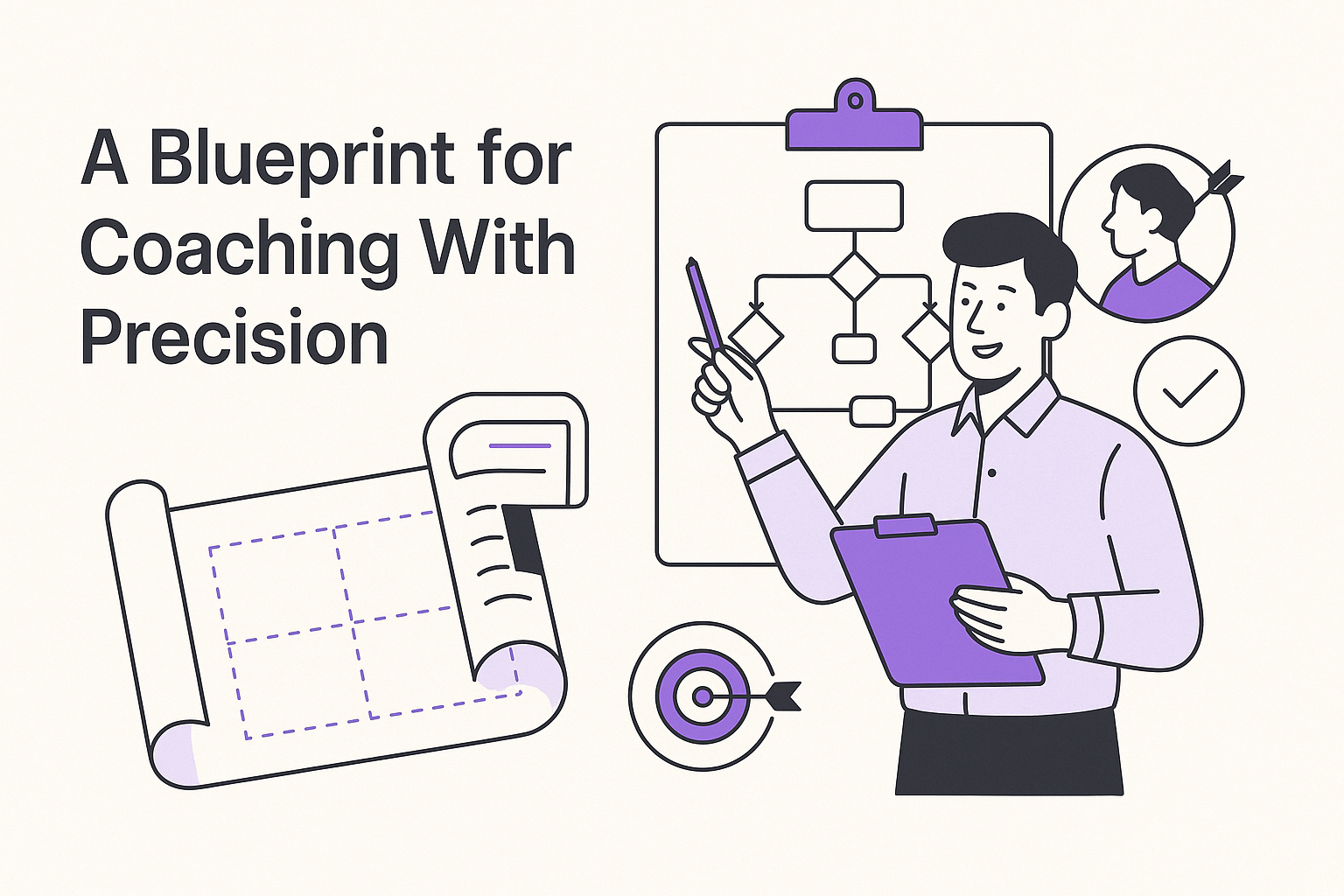7 Steps to Generate Insights About Research
-
Hello Insight
- 10 min read
Research Insight Generation begins with understanding the complexities of data. Insights gleaned from research can drive strategic decisions, improve user experiences, and ultimately lead to business growth. In today's fast-paced environment, making sense of vast amounts of information is crucial for staying competitive. Effective strategies for insight generation can empower teams to uncover patterns and make data-driven choices.
This introduction to Research Insight Generation will outline a step-by-step approach to transforming data into actionable insights. By employing systematic methodologies, organizations can streamline their research processes and enhance collaboration. Understanding who the audience is and how to address their needs is vital. Emphasizing why these insights matter will ensure focus and direction throughout the insight generation journey.
Step 1: Define Your Research Objectives
The first step in generating research insights is to clearly define your research objectives. Establishing what you want to achieve is crucial to guiding your entire research process. Start by asking yourself what questions you need answers to and how those answers will impact your decisions. Be specific about the insights you hope to gain, as this will help you stay focused and streamline your efforts.
Next, consider the key factors that will influence your objectives. Think about your target audience and the challenges they face. Understanding their needs will inform your research direction. Additionally, outline the metrics you will use to measure success. By defining clear objectives, you not only create a roadmap for your research but also ensure you gather actionable insights that drive meaningful decisions. This foundational step is essential for effective research insight generation.
Setting Clear Goals for Research Insight Generation
Setting clear goals for research insight generation is crucial in guiding your research efforts. By defining specific objectives, you can streamline your approach and focus on gathering relevant data. Start by identifying the primary questions you want to answer. Are you seeking to understand customer behaviors, improve service delivery, or gauge market trends? Establishing these goals will help you determine the type of research methods to utilize and the metrics to evaluate success.
Next, consider breaking down your goals into smaller, actionable steps. For instance, prioritize customer experience and engagement as core objectives, and set measurable outcomes for each. This clarity will not only enhance the quality of insights generated but also ensure that your research aligns with the broader strategic vision. In essence, clear goals are the cornerstone of effective research insight generation, setting the stage for meaningful analysis and impactful decision-making.
Aligning Objectives with Research Questions
Aligning objectives with research questions is a critical step in the journey toward effective research insight generation. To achieve meaningful results, it’s essential to start by clearly defining your research objectives. These objectives serve as your guiding framework and help in formulating specific questions that you need to explore. Each research question should directly relate to your objectives, ensuring that you gather relevant data that leads to actionable insights.
To streamline this process, consider the following key points:
Define Clear Objectives: Identify what you hope to achieve through your research. Are you aiming to understand customer needs or evaluate market trends?
Formulate Specific Questions: Translate your objectives into specific questions that can be answered through research methodologies, such as surveys or interviews.
Align Methodology with Objectives: Choose research methods that will effectively address your questions, whether qualitative or quantitative approaches.
Iterate and Refine: As you gather insights, revisit and adjust your objectives and questions as necessary to ensure continual alignment.
By maintaining this focus, you will enhance the clarity and relevance of your research, driving towards successful insight generation.
Step 2: Gather and Organize Relevant Data
To effectively generate insightful research, it’s crucial to gather and organize relevant data systematically. Start by collecting various forms of data, including interviews, surveys, and existing research literature. Ensure that all data is stored in a centralized location, which facilitates easy access when needed. Organizing this data allows you to identify patterns and insights more quickly, making your research efforts more productive.
Next, categorize the data based on relevant themes or questions. This could involve creating folders for different topics or using databases that allow for tagging and filtering. By structuring your data this way, you make it easier to analyze and extract actionable insights later. A well-organized data set enhances your understanding of the nuances within the information, thereby enriching your overall research insight generation process. Thus, you position yourself to draw meaningful conclusions and inform future decisions effectively.
Data Collection Methods for Insight Generation
Data collection methods play a crucial role in research insight generation. Diverse techniques can be adopted to gather valuable information, allowing researchers to analyze subjects from various angles. Primary data collection methods, such as surveys and interviews, help gather firsthand insights directly from participants. These methods allow for deeper engagement, revealing attitudes and motivations not easily captured by secondary data.
Additionally, observational techniques can provide unfiltered insights into behaviors in natural settings. By integrating different data collection methods, researchers can enhance the validity of their findings. It's important to consider the specific goals of your research when selecting the appropriate methods. This approach ensures that the data collected aligns with the intended objectives and can effectively drive insightful conclusions. Employing a combination of qualitative and quantitative strategies can maximize the research insight generation process.
Data Management for Streamlined Analysis
Data management plays a crucial role in facilitating streamlined analysis in research. Properly structured data sets enable researchers to access the information they need quickly, facilitating more effective insight generation. When data is effectively organized and maintained, researchers can analyze results with ease, leading to faster and more accurate conclusions. This process begins with the careful collection and storage of relevant data, which forms the backbone of any research initiative.
To ensure efficient data management, consider the following key practices:
- Data Collection: Use various sources to gather comprehensive data that meets your research objectives.
- Data Organization: Categorize and label your data clearly for straightforward navigation.
- Data Security: Implement strong security measures to protect sensitive information throughout the analysis process.
- Regular Review: Periodically evaluate your data management processes to identify areas for improvement.
By focusing on these practices, researchers can create a robust system for managing data, enabling better insights and informed decision-making in their projects.
Step 3: Conduct Thorough Data Analysis
Conducting thorough data analysis is a critical step in research insight generation. This phase involves systematically examining the collected data to identify patterns, correlations, and trends that can drive meaningful conclusions. By delving deep into the information, you uncover valuable insights that can guide decision-making and strategy formulation. Each data set can yield different stories, and understanding these narratives is essential for accurate interpretations.
To perform a comprehensive analysis, follow these steps:
- Data Cleaning: Start by ensuring the data is free from inaccuracies or irrelevant information.
- Data Segmentation: Break the data into manageable categories for more focused analysis.
- Statistical Analysis: Utilize appropriate statistical methods to quantify relationships between variables.
- Visualization Tools: Employ visual aids like charts and graphs to illustrate findings clearly.
- Interpretation: Synthesize the data to draw actionable insights and implications for your research objectives.
Each of these steps will enhance the clarity and effectiveness of the insights derived from your data analysis efforts.
Qualitative and Quantitative Analysis Techniques
Qualitative and quantitative analysis techniques are essential in research insight generation, offering unique perspectives on data. Qualitative methods focus on understanding experiences, emotions, and motivations through interviews, focus groups, and observations. These approaches help uncover deeper insights that numbers alone may overlook.
In contrast, quantitative analysis utilizes structured metrics, such as surveys and statistical analyses, to provide measurable data. This method allows researchers to validate hypotheses and analyze trends across larger populations effectively. By integrating both approaches, research teams can achieve a comprehensive understanding of their subject matter. This balanced methodology ensures robust insight generation that captures the nuances of human behavior alongside measurable outcomes, ultimately guiding more informed decisions and strategies.
Tools for Effective Data Analysis
Effective data analysis is crucial for Research Insight Generation. Various tools can help streamline processes, making it easier to derive meaningful conclusions. Start by utilizing qualitative analysis software, which aids in examining interview transcripts and aggregating insights efficiently. These tools reduce the overwhelming complexity, allowing even novice researchers to access essential data.
Next, consider visualization tools. They transform raw data into visually engaging formats, facilitating better comprehension for stakeholders. Incorporating statistical software can also refine your analysis, offering diverse methodologies for deeper data interpretation. Finally, employing data management platforms ensures organized storage, making retrieval straightforward during the review process. By integrating these tools, researchers can enhance their capacity to generate valuable insights while simplifying workflow dynamics.
Step 4: Identify Patterns and Trends
Identifying patterns and trends is essential for unlocking deeper insights from your research data. This process involves systematically reviewing your findings to discover recurring themes or behaviors that can inform decision-making and strategy. Start by organizing your data, focusing on key variables that emerge across multiple sources. By analyzing these elements collaboratively, you can better understand how different factors interact over time.
Once you have clearly defined patterns, visualize them to enhance comprehension and communicate insights effectively. Graphs and charts can reveal underlying connections that may not be immediately apparent. Engaging with your team during this stage can foster richer discussions, allowing diverse perspectives to shape the significance of the emerging trends. Remember, the goal of research insight generation is to guide future actions by clearly understanding how previous data informs user behaviors and market dynamics.
Spotting Significant Patterns in the Data
Spotting significant patterns in data is essential for effective research insight generation. When you analyze your data sets, look for recurring themes or trends that emerge across different responses. For instance, if multiple participants mention similar challenges, it highlights a common issue that requires attention. Identifying these patterns can lead to more substantial actionable insights that inform decision-making processes.
To enhance your ability to spot these meaningful patterns, consider the following steps. First, organize your data systematically, which allows for easier comparison. Next, visualize the data to uncover trends effectively; charts and graphs can reveal insights that raw data cannot. Finally, consult with your team or stakeholders to gather different perspectives, enriching your understanding of the data. By following these steps, you can elevate your research and generate insights that drive progress.
Utilizing Trend Analysis for Insight Generation
Trend analysis plays a vital role in research insight generation by identifying patterns that can drive decision-making. By systematically examining data over time, researchers can uncover shifts in behavior, preferences, or market dynamics. This approach enables organizations to proactively respond to emerging trends instead of reacting after they have taken hold. Understanding these trends helps tailor strategies and goals to align with consumer needs or operational challenges.
To effectively utilize trend analysis, consider the following steps:
Data Collection: Gather relevant data from various sources, including surveys, customer feedback, or market reports.
Identify Patterns: Analyze the data to identify trends that emerge over time. Look for consistencies that can indicate strategic opportunities or challenges.
Contextual Understanding: Assess the implications of the identified trends within the broader research context, including market conditions or consumer sentiment.
Actionable Insights: Translate the observed trends into actionable insights that inform business strategy, product development, or marketing initiatives.
Continuous Monitoring: Establish a routine for ongoing trend analysis to remain agile and adapt to evolving market conditions.
By following these steps, researchers can enhance their ability to generate meaningful insights that shape strategic decisions and foster innovation.
Step 5: Validate Your Findings
Validating your findings is a crucial step in the research insight generation process. It ensures that the conclusions you draw are based on sound evidence and robust analysis. Start by reviewing your methodologies and data collection methods. This scrutiny helps to confirm that your findings are reliable and that any potential biases have been identified and addressed.
Once you've assessed your methods, seek feedback from peers or industry experts. External validation adds credibility to your findings and allows for fresh perspectives. Additionally, consider running follow-up research or surveys to support your initial insights. This iterative approach not only strengthens your conclusions but also enhances the understanding of your audience's needs and preferences. In conclusion, validating your findings is an essential practice that ensures your insights are trustworthy and actionable.
Cross-Referencing Data for Consistency
Cross-referencing data is essential for ensuring consistency in research insight generation. When you gather data from multiple sources, it's vital to examine how these data sets align or differ. This process helps identify discrepancies that may impact the validity of your insights, leading to more accurate conclusions.
To effectively cross-reference data, follow these steps:
Identify Source Types: Determine the types of sources you are working with, such as surveys, interviews, and case studies. This clarity makes it easier to spot inconsistencies.
Check Data Consistency: Look at key metrics across the various sources. If different sources report conflicting information, further investigation is necessary.
Synthesize Findings: Merge the insights gained from consistent data. This helps form a comprehensive view and enhances your overall understanding.
Document Variances: Clearly record any discrepancies. Understanding these variances can inform future research and methods.
Cross-referencing not only contributes to the reliability of your findings but also builds a foundation for actionable insights.
Peer Review Process for Reliable Research Insights
The peer review process is essential for ensuring reliability in research insights. By having experts evaluate the methodology, analysis, and conclusions, researchers can validate their findings and increase credibility. This process typically involves a thorough assessment, where reviewers scrutinize both the data and the interpretations made. Their feedback can highlight strengths and areas needing improvement, thus enriching the overall quality of the research.
Moreover, engaging in peer review fosters a culture of collaboration and knowledge sharing among researchers. It encourages constructive criticism, allowing researchers to refine their insights and address any biases. Additionally, when research undergoes rigorous peer evaluation, the generated insights carry weight within the academic community. This enhancement of integrity and trust is crucial in the pursuit of reliable research insights, reinforcing the notion that insight generation should be thorough and reflective of multiple perspectives.
Step 6: Draw Meaningful Conclusions
Drawing meaningful conclusions from your research is essential for gaining actionable insights. This stage requires a thorough analysis of the data collected to identify trends and patterns. By summarizing key findings and comparing them against your initial objectives, you can assess how well your research aligns with your goals and what it says about your target audience.
Engaging with the data also means recognizing any gaps or inconsistencies that could inform your next steps. It is crucial to synthesize these insights into clear narratives that resonate with stakeholders. Remember, effective conclusion drawing transforms raw data into valuable knowledge, facilitating informed decision-making moving forward.
Translating Data into Actionable Insights
Translating data into actionable insights involves systematically converting raw information into strategic steps that drive decision-making. To achieve this, it’s essential first to gather and analyze qualitative and quantitative data effectively. This helps uncover patterns, trends, and opportunities that may not be immediately apparent. Once the data is thoroughly examined, the next phase is synthesizing these findings into clear, applicable recommendations tailored to specific issues.
One effective approach to this process includes several key steps:
Data Collection: Gather diverse data sources, such as interviews and surveys, ensuring a comprehensive view.
Data Analysis: Utilize analytical tools to interpret the data, identifying crucial insights that emerge.
Insight Mapping: Visualize insights to clearly outline connections and relationships.
Recommendations Development: Formulate actionable recommendations based on mapped insights.
Stakeholder Engagement: Share findings with relevant stakeholders to foster collaboration on the next steps.
By following these structured steps to research insight generation, organizations can turn information into meaningful actions, driving success and innovation.
Presenting Your Research Insight Generation Effectively
To present your research insight generation effectively, focus on clarity and engagement. Begin by synthesizing relevant data from multiple sources, highlighting key findings that address the specific concerns of your audience. This synthesis not only clarifies your insights but also ensures they are tailored to the needs of stakeholders. Effective storytelling around these insights fosters a deeper understanding and connection with your research.
Next, visualize your findings using charts and graphs. Visual elements can transform complex data into digestible formats, making it easier for your audience to grasp the implications. Streamlined reporting tools play a crucial role in this process, enabling you to generate reports in formats like PDFs or slides. Such formats make it easier for stakeholders to interact with your insights and implement actionable strategies. Ultimately, the goal is to foster a collaborative approach where insights lead to informed decisions and meaningful outcomes.
Step 7: Refine and Repeat
Refining and repeating your approach is essential for effective research insight generation. As you analyze your findings, identify themes and patterns, focusing on what works and what doesn’t. This iterative process allows you to enhance your understanding and adapt your strategies accordingly. Collect feedback from various sources to gain different perspectives, ensuring your insights remain relevant and actionable.
To streamline the refinement process, consider these steps:
- Evaluate Findings: Review your previous results, looking for gaps or unexpected outcomes.
- Gather Feedback: Seek input from peers or stakeholders to enrich your perspective.
- Adjust Methodology: Modify your research methods based on the feedback and insights gained.
- Repeat the Process: Conduct further rounds of research, applying the improvements identified and remaining open to new insights.
By continuously refining and repeating, you cultivate an agile mindset that enhances your ability to generate valuable research insights over time.
Continuous Improvement of Research Techniques
Continuous improvement of research techniques is critical for generating valuable insights. This involves regularly evaluating existing methods and identifying areas for enhancement. By incorporating feedback and adapting to new information, researchers can refine their approaches. Continuous improvement ensures that research insight generation becomes more effective and aligned with evolving needs.
To facilitate this ongoing process, consider several key strategies. First, adopt new technologies and analytical tools to streamline data collection and analysis. Second, establish a routine for reviewing research outcomes to identify gaps and successes. Third, engage with cross-functional teams to incorporate diverse perspectives, which often leads to innovative solutions. Finally, invest in training for researchers to keep them updated on best practices and emerging trends. These strategies collectively foster a culture of improvement, enabling more profound insights that can drive decision-making and strategies across various sectors.
Iterative Process for Enhanced Insight Generation
The iterative process for enhanced insight generation focuses on refining our understanding of research findings over time. By consistently revisiting and analyzing our insights, we can identify patterns and trends that may have initially gone unnoticed. This approach promotes adaptability and fosters a deeper comprehension of the data, ultimately leading to more meaningful conclusions.
To implement this iterative process effectively, follow these steps:
- Gather Data: Collect initial findings from various research methods, ensuring a broad range of perspectives.
- Analyze Findings: Break down the data to identify key themes and insights.
- Refine Insights: Reassess your findings with fresh eyes; invite team input to enhance understanding.
- Implement Changes: Apply insights to your research strategies and activities, adapting to emerging trends.
- Collect Feedback: Seek input on the changes made, ensuring their effectiveness.
- Repeat the Process: Continue refining and evolving insights through regular cycles of analysis and application.
This cyclical method enhances research insight generation, leading to richer, more actionable outcomes.
Conclusion: Mastering Research Insight Generation
Mastering research insight generation is essential for transforming raw data into actionable knowledge. By refining your research process, you can unveil deeper trends and patterns that often remain hidden. This mastery begins with a clear understanding of your target audience and their needs. Engaging with diverse methodologies can provide unexpected perspectives, enriching your analysis with varied insights.
As you implement the seven steps outlined in this document, focus on cultivating a culture of inquiry and curiosity. Consistently optimizing your approach will lead to improved research outcomes and strategic decision-making. Ultimately, the journey toward effective insight generation is ongoing, requiring continuous learning and adaptation to the evolving research landscape.






